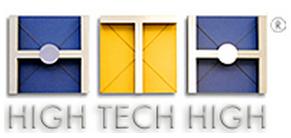 This summer, I will be participating in a program through a local community college called MERIT. MERIT is “a research-based, educator development program designed to help teachers bolster their curriculum with student-centered, technology-enhanced learning activities to motivate, challenge and inspire the diverse learners and leaders of the future” (McGriff, 2010).
This summer, I will be participating in a program through a local community college called MERIT. MERIT is “a research-based, educator development program designed to help teachers bolster their curriculum with student-centered, technology-enhanced learning activities to motivate, challenge and inspire the diverse learners and leaders of the future” (McGriff, 2010).
Similar to many of the ideas in Tony Wagner’s book, I hope that this program will give me many 21st Century Learning tools to use in my classroom. Even though the program hasn’t started, we have already had to complete a few assignments showcasing some great online tools.
Here are a few of my favorite:
1. Google Tools: The Google for Educators Site shares ways you can use the numerous Google tools in your classroom. They also have several webinars and project ideas.
2. TED Videos: Take a look at some of these great videos. Using the search feature, teachers can find inspiring talks by riveting speakers to address almost any lesson.
3. YouTube Videos: Although many people are familiar with YouTube, I have found some great videos which can help spice up any lesson. Here one of my student’s favorite videos which I used to help teach slope intercept form:
4. Next Vista for Learning: Here is a great, advertisement-free, video collection for teachers! I love how the videos are pre-screed and many of the videos are created by students!
5. Edtopia: Edtopia is another great resource to use in the classroom. It has a great search engine so you can easily find any lesson, as well as a blog and information on “schools that work.”
6. Classroom 2.0: Classroom 2.0 is a great social network for teachers. Although teaching can sometimes be an isolating experience, this website makes it easy for you to collaborate with teachers all over the world!
7. Lessonopoly: Lessonopoly is another great resources for teachers because it includes lesson plans, classroom management strategies and is also supported by the former State Superintendent. Check it out!
8. Curriki: Similar to Lessonopoly, Curriki is a non-profit organization built to help teachers share effective lessons.
9. Twitter: Not only can Twitter be a great way to search for effective teaching techniques, but it could also be a great way to communicate with your students!
I hope you can find some of these tools useful! If you’re interested in the MERIT program, click here!
McGriff, S. (2010, November 30). Kci merit program 2011. Retrieved from http://sites.google.com/site/kcimeritprogram/


 Recently I read a book called The Global Achievement Gap by Tony Wagner. This book gave a compelling answer to why students don’t seem prepare for the modern world. More importantly, he has intriguing questions, and that’s his bottom line: right answers may have been okay in the old world, but knowing how to ask the right questions is the key to survival in the new, global world our students are entering. Socrates knew that eons ago. Why have we lost that critical skill, and what can we do about it?
Recently I read a book called The Global Achievement Gap by Tony Wagner. This book gave a compelling answer to why students don’t seem prepare for the modern world. More importantly, he has intriguing questions, and that’s his bottom line: right answers may have been okay in the old world, but knowing how to ask the right questions is the key to survival in the new, global world our students are entering. Socrates knew that eons ago. Why have we lost that critical skill, and what can we do about it?


